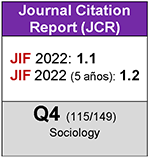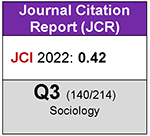Unemployment and the Probability of Falling into Poverty Traps: Considerations for Developing Countries
DOI:
https://doi.org/10.5477/cis/reis.164.3Keywords:
Public Policy Design, • Illiteracy, Unemployment, Economic Indicators, Social Indicators, Econometric Models, PovertyAbstract
Results from the fight against poverty have not been very significant when we consider the worldwide effort made in the last thirty years. Some areas even show stagnation, leading to the assumption that there is a poverty trap that prevents poor countries from achieving the necessary big push. Based on Myrdal’s concept of circular cumulative causation, this paper proposes an econometric model to calculate the probability of developing countries falling into a poverty trap. The results show that there is a significant positive correlation between the level of unemployment and the probability of falling into a poverty trap, and thus, it is concluded that non-intergenerational mobility and the persistence of poverty are strongly associated with unemployment.
Downloads
Downloads
Published
How to Cite
Issue
Section
License
Copyright (c) 2024 Revista Española de Investigaciones Sociológicas

This work is licensed under a Creative Commons Attribution-ShareAlike 4.0 International License.
Permite Compartir — copiar y redistribuir el material en cualquier medio o formato, Adaptar — remezclar, transformar y construir a partir del material para cualquier propósito, incluso comercialmente.








